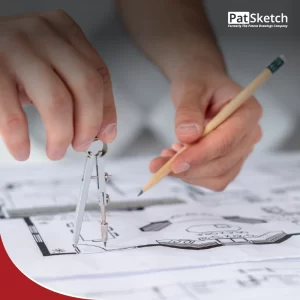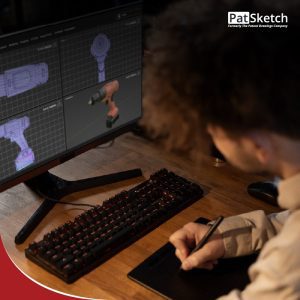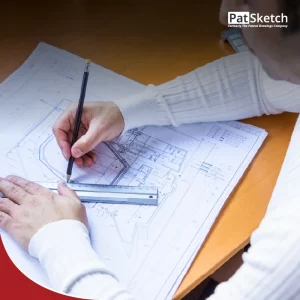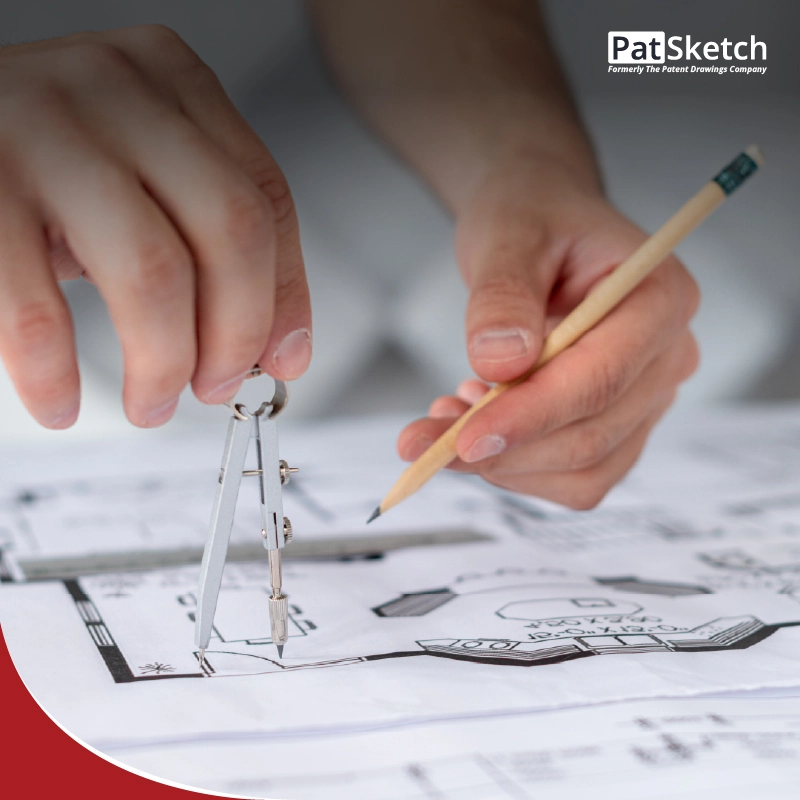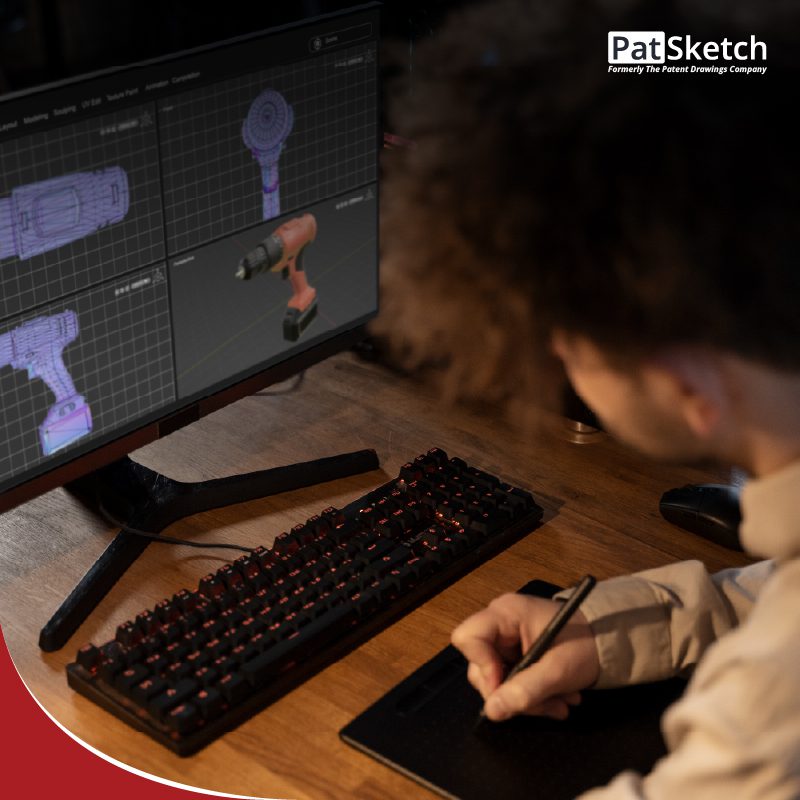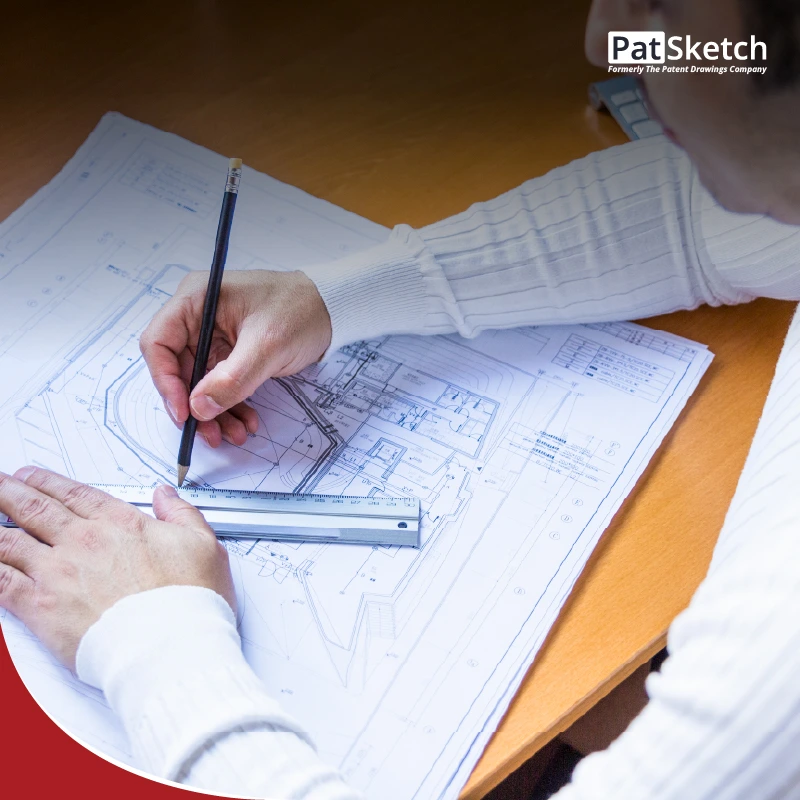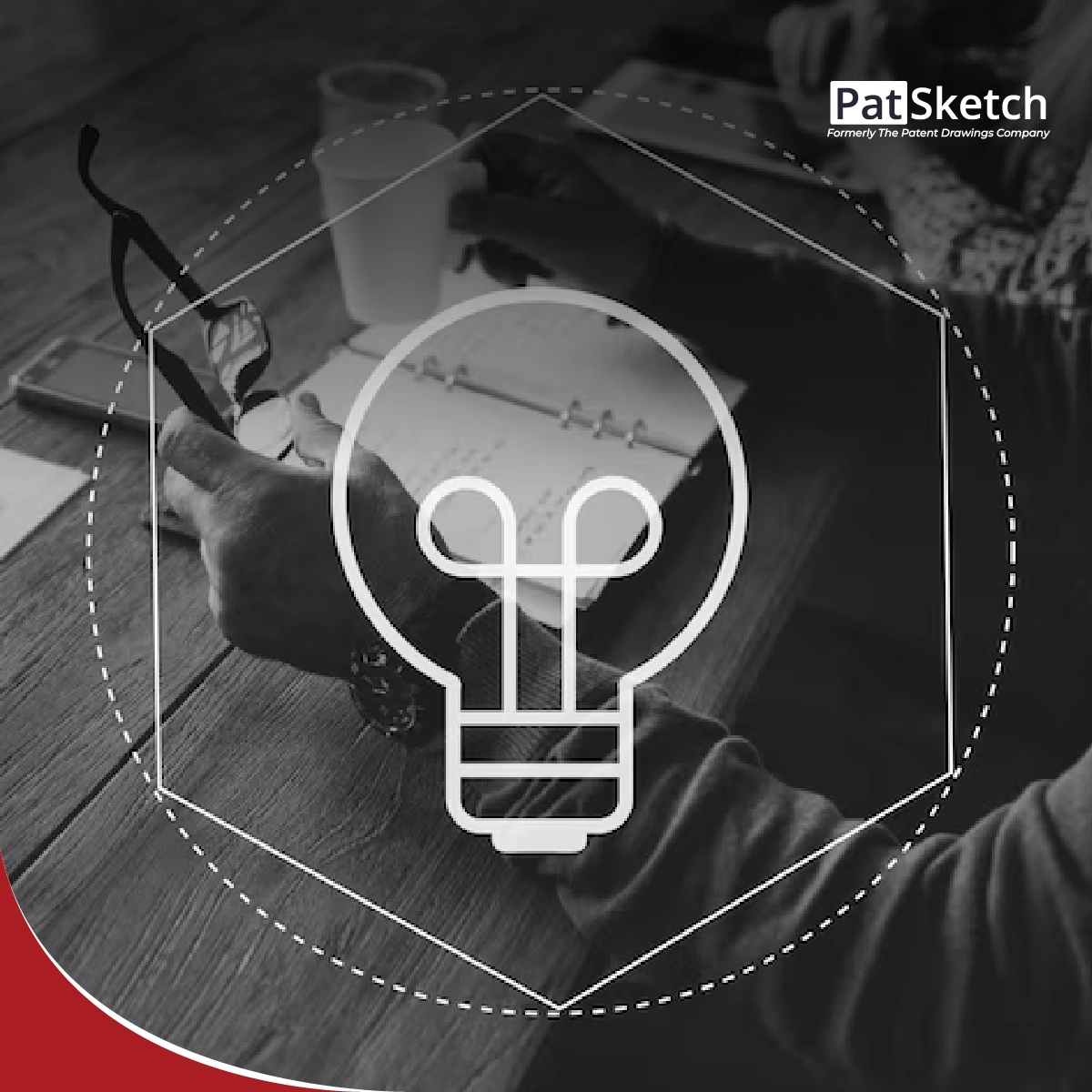Before coming onto the rules and requirements of USPTO for design drawings, let’s quickly learn what a design patent and a design drawing are.
A design patent is an exclusive right that protects the appearance of your invention. Make sure that the design of your invention falls under the four criteria of patentability, which include-
- Novelty: it describes how the design is new and no other such design exists anywhere in the world.
- Originality: it defines the creativeness of the design. That is, how and what features make it different from the rest of its prototypes.
- Ornamental design: the patent protects the visual appearance of the product. It does not include the hidden features of the article.
- It should be on an article of manufacture: Always draft the design showing the article on which it is presented.
The drawings give complete visual disclosure of the claim. Therefore, at the time of patent drafting be mindful of creating clear and complete designs. Also, make sure you cover every aspect of it that you want to claim and get a patent grant for.
Section 35 U.S.C. § 171 talks about patents for design. Always comply with the requirements of section 37 CFR 1.84 USPTO, which have been discussed below.
Also, read Why should you hire a good patent illustrator?
USPTO Requirements for Design Drawings
Do consider the following features before preparing design drawings. These provisions are as per the USPTO Design Patent Application Guide.
| S. No. | Criteria | Description |
| 1. | Black Ink and/or India Ink | The USPTO prefers black and white design patent drawings. India ink (suspension of carbon black particles in a medium such as ethylene glycol) or is equivalent is permissible as it retains a solid black color. |
| 2. | Color ink | Use of color drawings becomes necessary only when they become a practical medium to disclose the patentable subject matter. But make sure you don’t add colored drawings to PCT application. |
| 3. | Paper | Make sure that you submit drawings on flexible, strong, white, smooth, non-shiny and durable paper. Keep the dimensions of the sheet equal for every drawing. The accepted dimensions are 21.0 cm by 29.7 cm (DIN size A4) and 21.6 by 27.9 cm (8 ½ by 11). Note: keep the shorter side of the page at the top. |
| 4. | Views | Show as many views as possible of your design drawing in order to cover all its aspects. For instance, some of the views are plain, elevation, section or perspective view. Also, add detailed views of a portion of elements on a larger scale (if required). Closely position all the drawings by not wasting space but at the same time, keep appropriate space between them for differentiation. Note: there are 6 standard views of design drawings. You as an applicant can skip mentioning any particular view if you don’t find it relevant while drafting the design patent application. |
| 5. | Scale | The scale of the drawing large enough to show each and every detail of the drawing even at the scale of 2/3 of the actual size. |
| 6. | Shading | Perform appropriate and adequate surface shading to show the character or contour of the surfaces represented. Also, it helps in distinguishing between open and solid areas. Inappropriate or absence of surface shading can lead to non-enabling rejection of the patent application under 35 USC 112(a). Remember to give preference to thin and spaced lines over solid black surface shading unless representing color black or color contrast. Be mindful of shading your drawings before initial filing since the addition of shading considered as new matter. On the other hand, broken lines define structures that are not part of the structure of the invention. |
Points to consider while filing a design patent
One needs to keep certain factors in mind before going for a design patent for their intellectual property. Also, to prevent any cases of patent rejection or infringement at later stages. Follow the USPTO provisions given below:
- Must be an embodied design: an embodied design helps get an idea as to where the design is present. It can be in the form of product structure or product layout.
- Scope of Protection: design patents protect surface ornamentation, configuration embodied in an article, and configuration and surface ornamentation.
- The design need not cover the entire article or product.
- Display separated parts as part of the whole design. But, keep in mind that separated parts do not get separate patent protection.
- Include alternate configurations of the design.
- Include variants of design in the same patent application if the differences are obvious in the view of case law.
Related Article: Writing a Patent Draft – The Major Requirements
What do we bring to the Patent Drafting Catalyst?
PatSketch, formerly The Patent Drawings Company, specializes in providing high-quality, affordable patent drawings for inventors, law firms, and businesses. With over 16 years of experience, their expert illustrators have successfully handled 30,000+ patent applications for 4,000+ clients across 50+ countries. They ensure quick delivery, unlimited revisions, and multiple output formats to meet clients’ needs. PatSketch is committed to precision and compliance with USPTO, EPO, and other patent office guidelines, making it a trusted partner for patent drawings.


